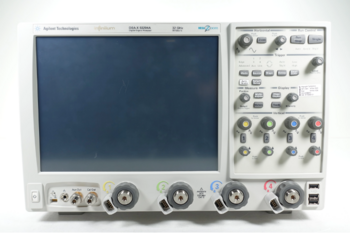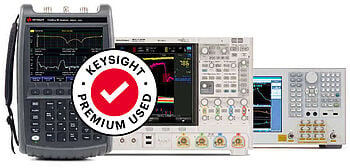- Introduction
- Understanding Ground Reference in Electrical Circuits
- Key Functions of Ground Reference
- Types of Ground Reference
- 1. Earth Ground
- 2. Chassis Ground
- 3. Signal Ground
- Why Ground Reference Is Important in Testing Equipment
- How Ground Reference Affects Testing Equipment
- Role of Ground in Oscilloscopes
- Practical Ground Reference Setup for Oscilloscopes
- Additional Tips for Maintaining an Effective Ground Reference
- Common Grounding Issues and Solutions
- Conclusion
- Whenever You’re Ready, Here Are 5 Ways We Can Help You
Have you ever wondered why electronic circuits rely so heavily on a “ground” point?
In electrical engineering, ground reference is a crucial concept that helps stabilize circuits, provides safety, and ensures accurate signal measurements.
Without a clear ground reference, measuring or understanding signals would be nearly impossible, especially when working with sensitive testing equipment.
In this article, we will explore what ground reference means, why it’s essential, and how it affects your testing and measurement processes.
| Key Takeaway |
|---|
| A solid ground reference stabilizes signals, reduces noise, provides safety and ensures accurate measurements. Proper grounding also protects equipment from voltage spikes and interference, making it essential for reliable testing results. |
Understanding Ground Reference in Electrical Circuits
Ground reference is a return path for electrical current in a circuit.
This reference acts as a baseline, or zero-volt point, against which other voltages are measured.
Ground reference ensures consistency and stability within electrical systems, aiding in everything from data interpretation to noise reduction.
Key Functions of Ground Reference
- Stabilization: Ground provides a stable reference point, helping maintain consistent voltage levels.
- Safety: A grounded system redirects excess electricity safely, reducing the risk of electrical shocks.
- Signal clarity: Establishing a ground reference minimizes electrical noise, essential for precise signal measurement.

Types of Ground Reference
Ground reference systems can vary based on applications and requirements. Here are three primary types.
1. Earth Ground
Earth ground, often used in high-power systems, connects directly to the Earth to dissipate excess energy safely.
- Common usage: Industrial power systems, homes, and large-scale electrical setups.
- Purpose: Protects against electrical surges by allowing excess current to flow into the ground.
2. Chassis Ground
This type grounds a system through the device’s physical casing, primarily for safety.
- Common usage: Appliances, automotive systems, and sensitive electronic devices.
- Purpose: Prevents electrical shock by grounding exposed metal parts of equipment.
3. Signal Ground
Signal ground is used in low-voltage circuits to provide a common reference point for signal processing.
- Common usage: Circuits with sensitive signals, such as audio and digital systems.
- Purpose: Ensures accurate signal readings by reducing noise and interference.
Why Ground Reference Is Important in Testing Equipment
When using oscilloscopes or other measurement tools, establishing a proper ground reference is essential.
Without a reliable ground, your measurements can become inaccurate, and your equipment may even suffer damage.
Grounding helps maintain consistent measurements, reduces interference, and provides a safer working environment for both the operator and the device.
How Ground Reference Affects Testing Equipment
Testing equipment like oscilloscopes, signal analyzers, and frequency counters rely on a stable ground to function accurately.
A poor or unstable ground can introduce problems that interfere with the quality and safety of your measurements.
Let’s take a deeper look at how ground reference influences different aspects of testing equipment.
Signal Accuracy and Stability
A stable ground reference ensures that voltage readings remain consistent over time.
When a signal lacks a solid ground reference, it may fluctuate due to electrical noise or other environmental factors.
This fluctuation, known as signal drift, makes it difficult to interpret accurate measurements.
- Example: In an oscilloscope, an unstable ground can cause the displayed waveform to shift up and down, making it harder to accurately measure attributes like peak-to-peak voltage or frequency.
Reduction of Ground Loops and Noise
Ground loops occur when there is more than one ground path in a system, which can create loops that pick up unwanted signals or electromagnetic interference (EMI).
These ground loops lead to noise interference, which may distort the signal and make it challenging to distinguish the true waveform.
- Implications for oscilloscopes: Noise from ground loops often appear as random spikes or fluctuations on the waveform display, which can mask the actual signal and impact measurement precision.
Protection Against Voltage Spikes and Equipment Damage
Testing equipment can be sensitive to high voltage, and grounding errors sometimes create voltage spikes that could damage internal components.
For oscilloscopes and other sensitive devices, these spikes can cause permanent damage or result in costly repairs.
- Safety tip: Ensure the ground connections on your equipment are securely fastened to reduce the risk of voltage surges. A reliable ground reference provides a path for excess electricity to safely dissipate, preventing potential harm to both the equipment and the operator.
Improved Signal Fidelity and Resolution
Signal fidelity refers to how accurately the equipment captures the actual signal without distortion.
An improper ground connection can degrade fidelity, especially in high-frequency applications where noise has a more significant effect.
When fidelity suffers, the resolution of your measurements also decreases, limiting the level of detail you can obtain from the waveform.
Isolation and Differential Measurements
In some testing scenarios, a direct ground connection may interfere with the signal or even cause short circuits.
Differential probes or isolated measurement techniques help by eliminating the need for a common ground reference while still maintaining accuracy.
In these cases, understanding the role of ground reference helps you decide whether direct grounding or an isolated measurement approach is best for your needs.
Role of Ground in Oscilloscopes
Oscilloscopes rely on ground reference as a baseline to measure voltage relative to a common point, allowing for accurate visualization of signals.
When setting up measurements, you connect the ground clip from the oscilloscope probe to the system’s ground, establishing a shared reference point.
Here’s what you risk without a reliable ground:
- Signal drift: Signals may appear unstable or distorted, especially in circuits with variable or high frequencies. This instability can make troubleshooting and analysis challenging.
- Inaccurate measurements: Ground loops create noise that can mask or distort the signal, impacting your ability to assess signal fidelity accurately. This may lead to misleading results or even require retesting.
- Potential damage: Grounding errors may introduce voltage spikes into the equipment, potentially harming sensitive components or reducing their operational lifespan.
Practical Ground Reference Setup for Oscilloscopes
Setting up an oscilloscope with a proper ground reference requires attention to detail, especially when dealing with high-frequency or sensitive measurements.
Following best practices for grounding will improve signal accuracy and prevent common issues, such as noise or ground loops.
Here are additional steps to consider:
- Double-check ground clips and connections: Make sure you have a solid connection between the ground clip on the oscilloscope and ground on your circuit. A weak or loose connection can cause fluctuations and introduce noise, so confirm that all connections are secure. Consider using alligator clips or dedicated grounding pins to maintain a stable connection throughout testing.
- Position probes strategically: The physical placement of probes can significantly impact signal quality. Try to position the oscilloscope probe and ground lead close to each other, directly near the measurement point in the circuit. Keeping this proximity minimizes the risk of noise pickup and reduces potential interference from nearby components or electromagnetic fields.
- Consider a dedicated ground plane: For more stable and accurate measurements, particularly in high-frequency circuits, consider using a ground plane. A ground plane provides a low-impedance path for ground signals and reduces electromagnetic interference, improving signal fidelity. This is especially useful in printed circuit boards (PCBs) where noise isolation is crucial.
- Minimize loops in ground wiring: Creating loops in your ground wiring can introduce interference, so keep your ground wiring as straight and short as possible. Using twisted ground and signal wires can further help by canceling out electromagnetic interference from external sources.
- Utilize BNC cables with low-impedance grounding: If your oscilloscope and test circuit use BNC connectors, make sure to use cables with low-impedance shielding. Low-impedance grounding ensures the signal transmitted from the probe to the oscilloscope remains stable and free of noise.
- Optimize grounding in multi-channel measurements: To ensure accurate readings, connect all probe ground clips to a common reference point in the circuit. Establish a common ground point for all channels to avoid ground loops and ensure that each measurement shares the same reference. This is especially useful in circuits with multiple nodes or components that may interact.
Additional Tips for Maintaining an Effective Ground Reference
- Use high-quality probe tips and accessories: Choosing probe tips that fit snugly into your circuit without creating gaps or loose connections can further improve signal stability.
- Use triaxial or coaxial connectors for sensitive signals: Triaxial connectors provide an additional layer of shielding. They are ideal for measuring low-level signals that may be prone to interference.
- Avoid grounding through oscilloscope cases: If possible, avoid using the oscilloscope chassis or metal case as the primary ground path. Instead, use dedicated grounding connectors designed for direct signal grounding.
Common Grounding Issues and Solutions
| Issue | Description | Solution |
| Ground Loop | Multiple ground paths create interference | Use a single-point ground to avoid loops |
| Signal Interference | Noise distorts signals | Separate digital and analog ground connections |
| Voltage Offset | Ground shift causes measurement inaccuracies | Regularly check ground connections |
| Loose Connections | Corrosion or wear on connections introduces noise | Inspect and clean connections regularly |
Conclusion
Understanding and implementing a proper ground reference is essential for accurate, stable, and safe electrical measurements.
By following best practices—such as using a single ground point, keeping ground leads short, and minimizing interference—you can improve signal clarity and protect your equipment.
For professionals needing reliable, high-quality testing tools, check out the Keysight Used Equipment Store. Find premium used oscilloscopes, spectrum analyzers, function generators, and multimeters, all rigorously tested for performance and ready to support precise measurements in your projects.

Whenever You’re Ready, Here Are 5 Ways We Can Help You
- Browse our Premium Used Oscilloscopes.
- Call tech support US: +1 800 829-4444
Press #, then 2. Hours: 7 am – 5 pm MT, Mon– Fri - Talk to our sales support team by clicking the icon (bottom right corner) on every offer page
- Create an account to get price alerts and access to exclusive waitlists.
- Talk to your account manager about your specific needs.
